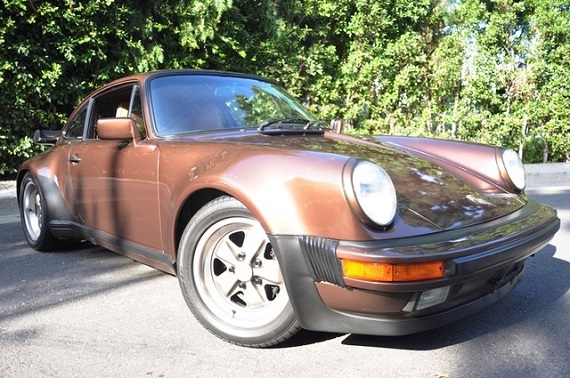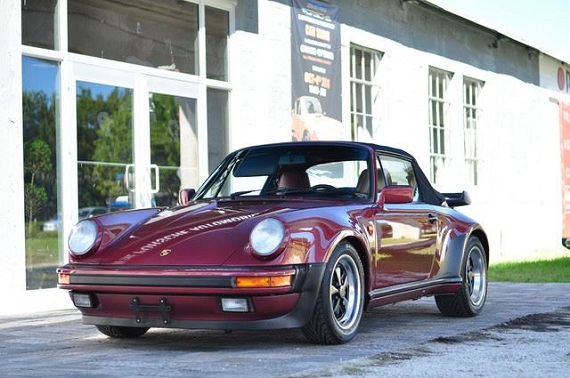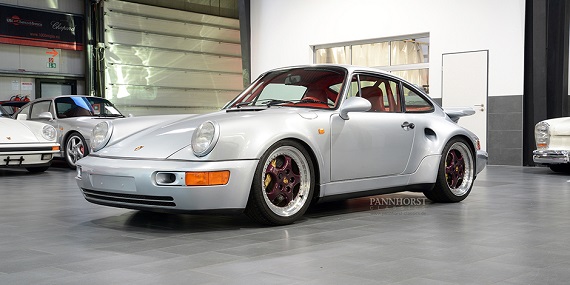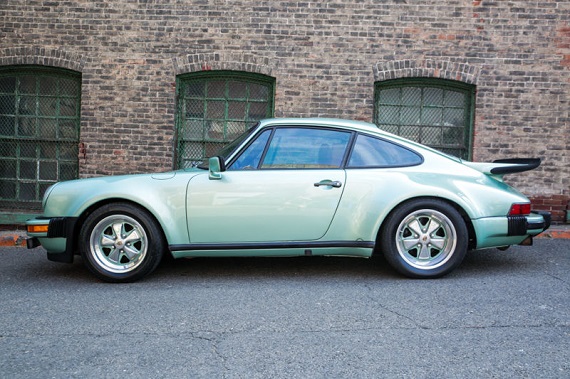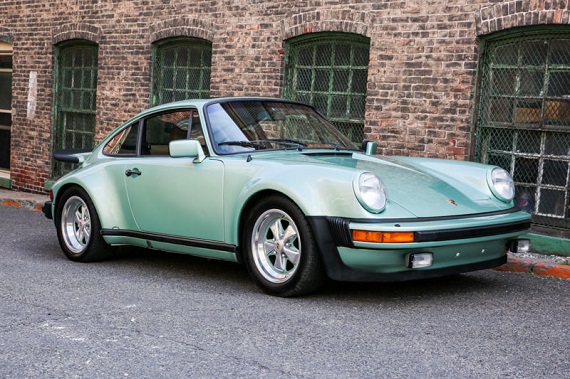We have featured a decent number of M491-equipped 911s and as the air-cooled market has continued its upward trend we have seen more and more of them pop up for sale. The M491 option package was conceived as a way to provide 911 customers in the US market a performance option that resembled the 930, but retained the standard Carrera’s naturally-aspirated 3.2 liter flat-six. That option package, in appropriate fashion, was dubbed the “Turbo Look” package. It was first made available in 1984 during the 930’s six-year hiatus from the US market and continued to be available, though was selected in far fewer numbers, even once the Turbo returned in 1986. The package included the Turbo’s front and rear spoilers along with its wider rear, complete with 930 suspension, braking, and wheels. Even without the extra power of the Turbo the M491 package was popular among enthusiasts for its superior handling and braking and many of these 911s saw a good deal of track time. It is only in recent years that their collectability has been recognized, but due to their performance focus even fewer of these already rare examples remain in excellent condition. For any prospective 911 owner desiring the appearance, handling, and braking of the Turbo, but without the highly-strung and maintenance intensive turbocharged engine the Turbo-Look Carrera makes for an attractive option. The example we see here comes from the second year of the package’s availability: a Nugget Brown Metallic 1985 Porsche 911 Carrera Coupe, located in Los Angeles, with Champagne leather interior and 92,863 miles on it.
Author: Rob
The release of the Carrera 4 was somewhat of a watershed moment for Porsche as it moved its iconic 911 in a new direction, allowing it to garner wider appeal yet without engendering any serious compromises to its performance. While any all-wheel drive system is going to be heavier the Carrera 4 was not simply a dumbed-down version of the 911 intended for boulevard cruisers. With lessons learned from the 959 supercar Porsche’s all-wheel drive system was to provide some mastery over the 911’s difficult dynamics. It would be easier to drive fast for many drivers and for some may be even faster than its rear-drive counterpart, depending on conditions. Even though there is some rally pedigree in the distant past of the early 911s Porsche probably wasn’t intending for the Carrera 4 to suddenly take on the Audi Quattro, but that is not something that should diminish how we approach the Carrera 4 itself. It was to be an all-conditions barn burner providing on the road benefits to its drivers equally at low speeds and high. First released in 1989 for the 964, the all-wheel drive system saw a number of refinements for the 993 intended to reduce the weight penalty of the all-wheel drive system while also improving its dynamic improvements over the 911’s standard rear-wheel drive. While not nearly as highly sought after as the Turbo-bodied Carrera 4S a 993 Carrera 4 remains an attractive option for buyers desiring one of the last of the air-cooled models and want to experience a healthy dose of Porsche’s technological acumen at the same time. Here we have one such example: an Aventurine Green Metallic 1995 Porsche 911 Carrera 4 Coupe, located in Brooklyn, with a Red leather interior and 52,801 miles on it.
CLICK FOR DETAILS: 1995 Porsche 911 Carrera 4 Coupe on eBay
1 CommentYesterday we looked at a beautiful early Turbo Carrera and today we will venture to the other end of the 930 timeline for one of the last Turbos produced. Here we have a Velvet Red Metallic 1989 Porsche 930 Cabriolet, located in Miami, with Red interior and just 36,783 miles on it. As this ad indicates, and which any seller of an ’89 930 surely will let you know, this was the only model year the 930 came equipped with a 5-speed manual transmission. That makes them extremely attractive to collectors as performance has consistently been a key factor in differentiating the value between various 911 models, with a one-year-only version of a performance model naturally garnering serious demand. For the 911 enthusiast these cars possess a somewhat different appeal as the final year of such an iconic model. They aren’t necessarily the best performing 930s on the market as increasing weight would hold them back relative to their earlier peers, but they do represent the most refined version of the breed, an attribute enhanced by that extra gear. All in all, there are a variety of reasons to find joy in the final year of the 930 and for the driver hoping to have a Turbo Cabriolet this also would be the last model produced in large numbers among the air-cooled 911s.
CLICK FOR DETAILS: 1989 Porsche 930 Cabriolet on eBay
1 CommentLike the 930 before it, the 964 Turbo would end its run having used two different engines. The first, a refined version of the 930’s 3.3 liter turbocharged flat-six, was used out of necessity while Porsche completed development of a turbocharged version of the standard 3.6 liter engine that debuted with the 964 more generally. The second engine, then, was that 3.6 liter, which came on board for the ’93 and ’94 model years. After nearly 15 years of use, inspiring the dreams of many, and helping establish the 911 as one of the world’s preeminent sports coupes the turbocharged 3.3 was to be put to bed. But Porsche, a company which takes a particular delight in final year send-offs, wasn’t quite done with it yet. Enter the 1992 Porsche 911 3.3 Turbo S Leichtbau (Lightweight). As the name would suggest the 3.3 Turbo S was taken in a slightly different direction from other Turbos and provides a nice contrast with the later 3.6 Turbo S, the apex of 964 performance and luxury. This is more in the vein of the GT2: a lightened, track-oriented, rear-drive Turbo that would debut a few years later for the 993. The GT2 perhaps is a more extreme example, but as we can see here the 3.3 Turbo S was not intended to provide a high degree of refined cruising and this specific example even has a more extensive roll cage than other versions I’ve come across (as rare as that may be). All told 86 examples were produced making these one of the rarest 911s and another of the exquisite 964 variants.
CLICK FOR DETAILS: 1992 Porsche 911 Turbo S Leichtbau on Pannhorst Classics
5 CommentsI have really taken a liking to these early Turbos over the years. There is no one specific reason why I prefer them over the later versions of the 930, or even most of the later 911 Turbos, but it is the coming together of a variety of factors that really gets to me. Some of it comes down to appearance as the early cars, with the whale tail, appear somewhat sleaker, ever though their dimensions are the same as the later cars. They ARE lighter as the 930 gradually increased in mass during its long production run, with the early versions coming in around 300 fewer pounds than the final year 930. Add to that their historical place within the 911’s lineage and you get a really nice combination. The market has responded similarly as the first two model years (and the first year especially) have shown significant increases in value only rivaled by the final year 930, which was the only year to feature a 5-speed transmission rather than what had been the standard 4-speed. In a rare, period specific color, such as the Ice Green Metallic we see here (also known as Silver Green Diamond Metallic) these are catapulted into another dimension entirely showcasing both beauty and history in one package. That brings us to this: a 1977 Porsche 911 Turbo Carrera, located in California, with 141,285 miles on it.

